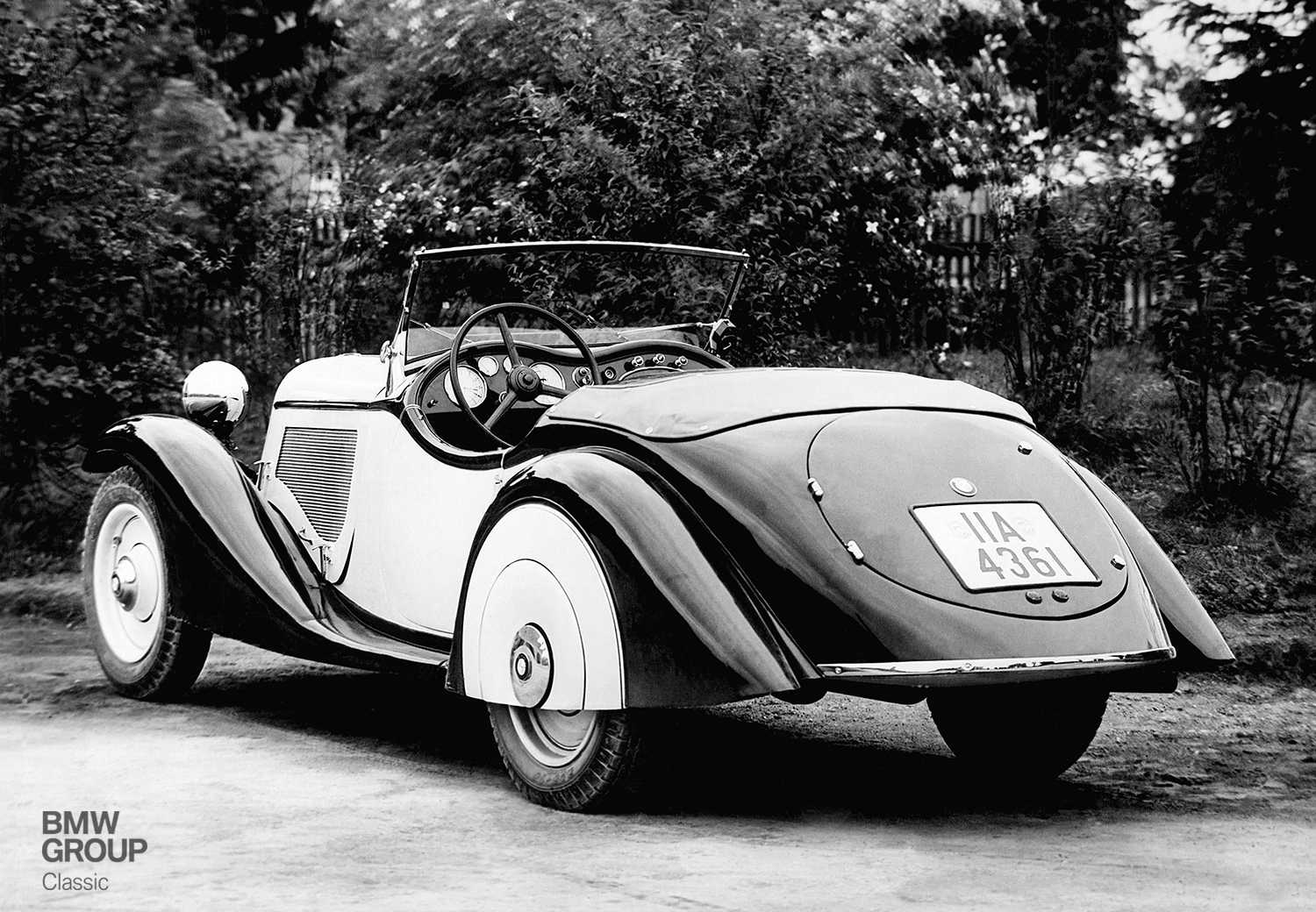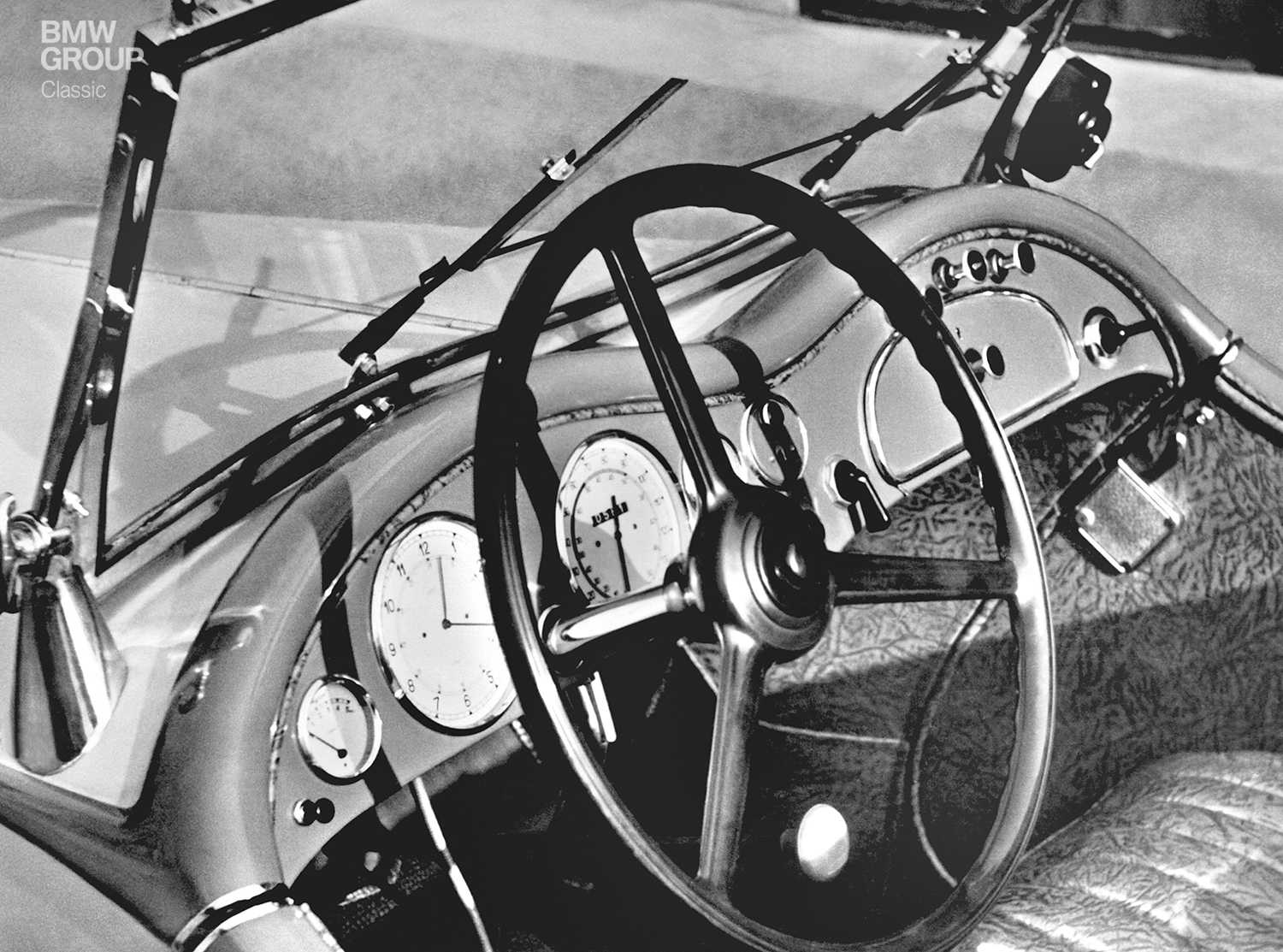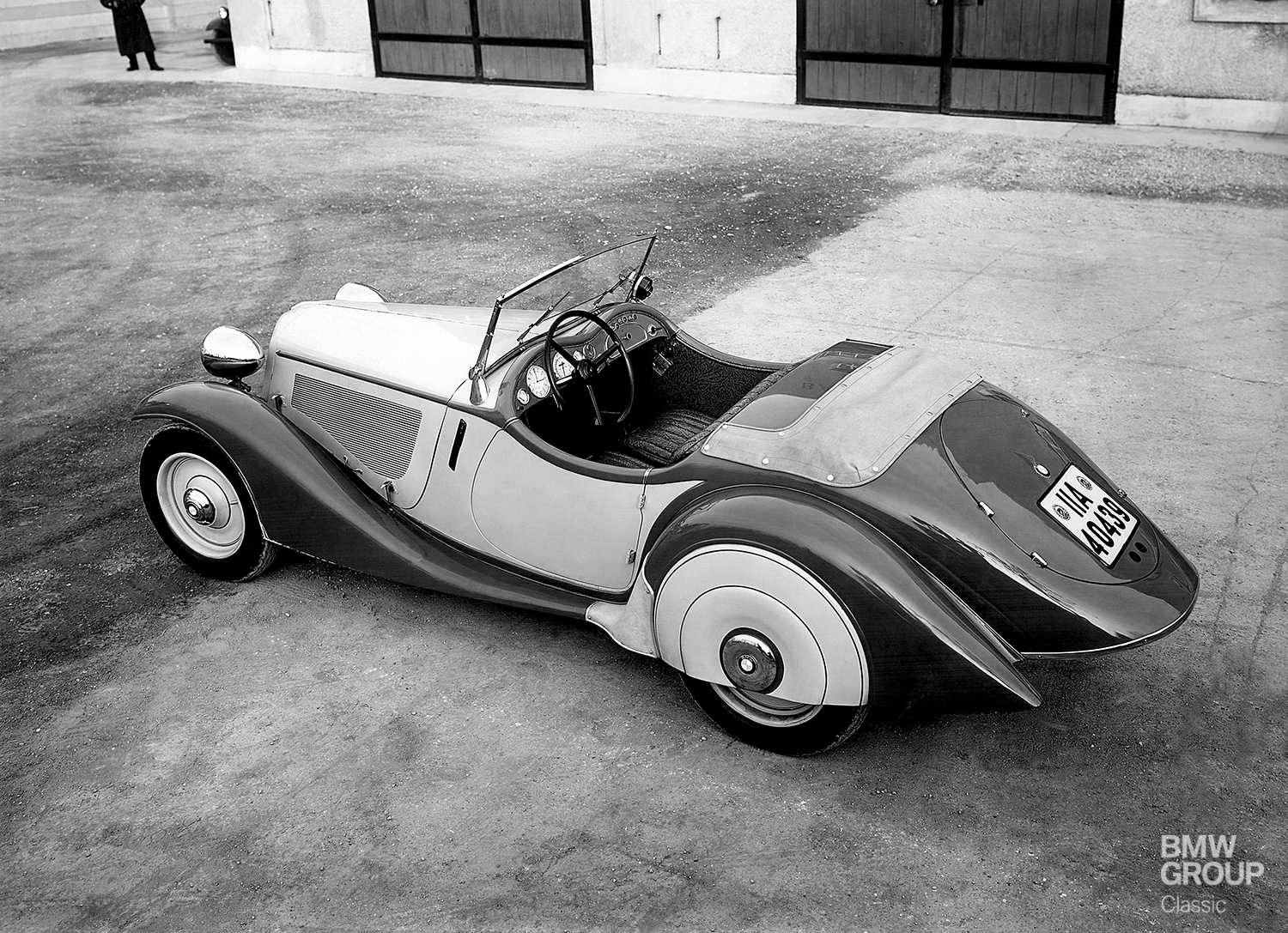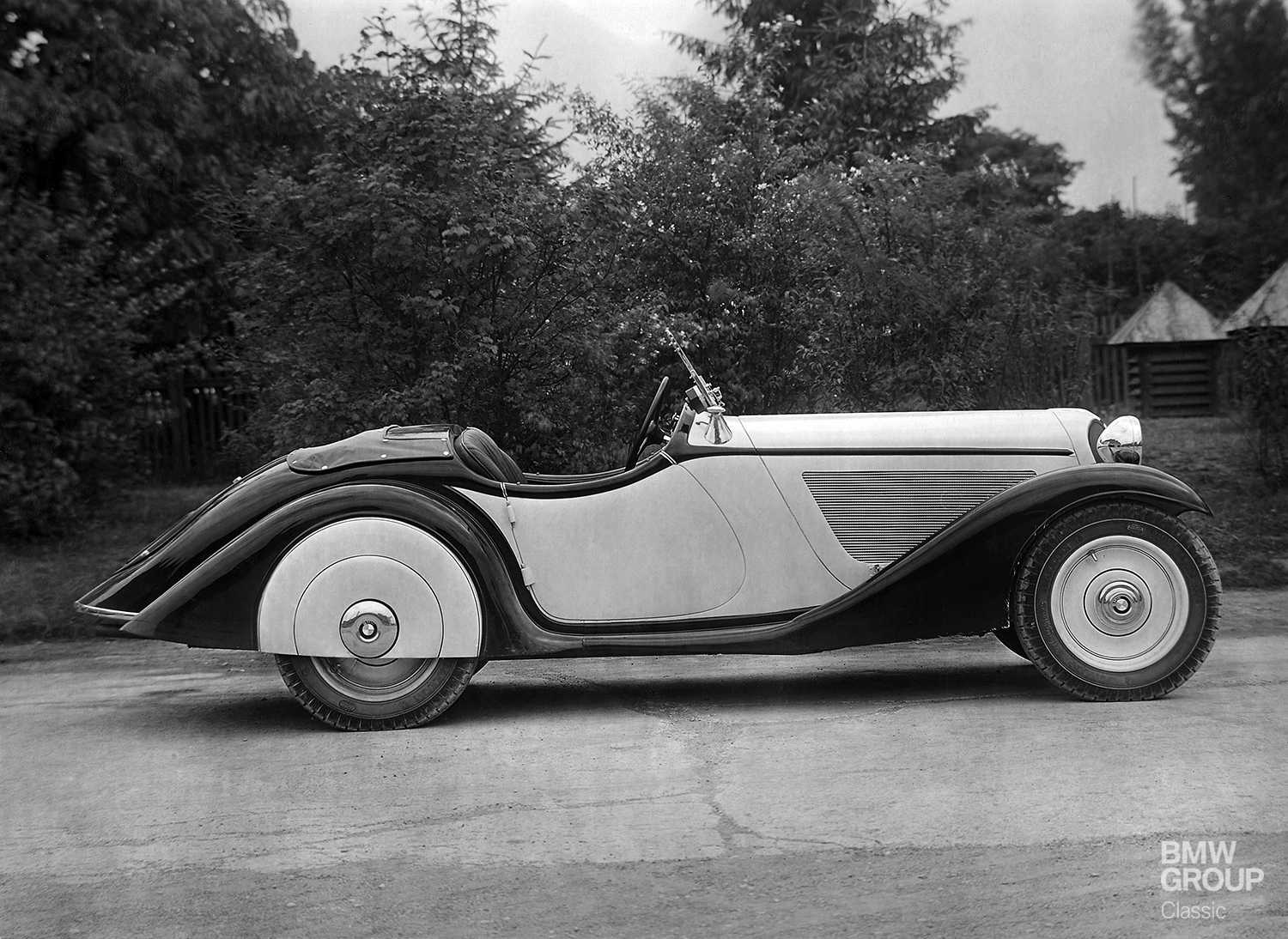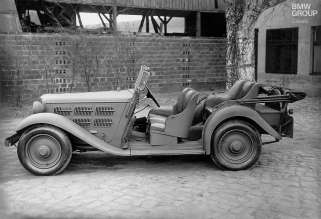A country road snakes its way towards the skyline. Perhaps there are a couple of mountains adorning the view on the left and right, overhead just a few small, white, fluffy clouds. Now, what car would complement this scene perfectly? A roof-down roadster, of course, with a long bonnet and two snugly fitting seats, a sporty steering wheel and dials bearing numbers that stoke the anticipation. So pull your cap down a little further, press the starter button and head for the horizon.
This dreamy driving utopia is almost as old as the motor car itself. And it is just as relevant today, as the BMW Z4 demonstrates in suitably 21st-century fashion. The sports roadster dream didn’t surface at BMW until 1934, but once there it seemed instantly familiar. While a race circuit or fashionable location would have made a fitting name for the new roadster’s badge, in the end it went by the unassuming moniker of “315/1”. Small when you’re standing next to it, the rightness of its proportions brooks no argument. The car stretches far down the road, all long bonnet and sweeping wings. Its radiator is sharply angled and the doors deeply cut. With the rear wheels covered to improve aerodynamics, the elegant curve of the car’s lines as it flows, full of promise, to the rear recalls a surging wave. There is no bumper to disrupt the lines, no hulking license plate. Even the spare wheel – a crucial piece of kit in the 1930s – is concealed under a circular lid. The creators declined to compromise on any aspect. The idyllic result of their endeavours: the sports roadster par excellence.
New models, new ideas.
In the early 1930s, BMW reinvented itself as a car manufacturer. The Dixi factory in Eisenach, acquired in 1928, formed the basis of this plan. Small cars built there under licence from Austin were given the BMW badge and strategically improved. The company had grander ambitions, however. It soon gave up the licence and developed models of its own in rapid succession. The BMW 315 replaced the 303 in 1934. It was available as a sedan, a “semi-open convertible sedan” with a large sunroof and as a full convertible. Also worthy of mention was the dual-carburettor, 1.5-litre six-cylinder engine, which developed 34 hp, could handle a bit of punishment and was pleasantly smooth.
When business becomes a pleasure.
The new BMW 315 was well received in general, but a special version went a step further and stole the show. A roadster known simply as the BMW 315/1, this was a beguiling and nippy little scamp with three carburettors to its name. Given the car weighed just 750 kg, its engine’s 40 hp was plenty to tackle any road the drivers at the time cared to mention. A top speed of 120 km/h (75 mph) made a proper statement, but for those still unsatisfied with the performance on offer, the opportunity soon arrived to order the 55 hp BMW 319/1 – and enjoy life at 130 km/h (81 mph). “Rocket!” came the cry from admiring youngsters at the roadside.
The new roadster was not only gorgeous and fast, it was also a first-rate sporting machine. Fitted with independent front suspension, a live axle with semi-elliptical springs at the rear and hydraulic lever-type shock absorbers, the chassis had the tools to handle the engine’s brawn. It competed successfully in a string of races and was a particularly strong contender in hill climbs, mixing it at the top of the time sheets from the outset. It thus laid the foundations for another sports roadster which would set the benchmark in its class just a few years later – the BMW 328.
Unfortunately for most fans, the sports roadster dream would remain elusive. 5,200 reichmarks was a lot of money in 1934 and owning your own vehicle was the preserve of a privileged few; most people got about by tram or bicycle. As a consequence, only 230 examples of the BMW 315/1 were ever built and a mere 178 of the more powerful BMW 319/1. Proof, if proof were needed, that some dream cars just aren’t meant to come true.
